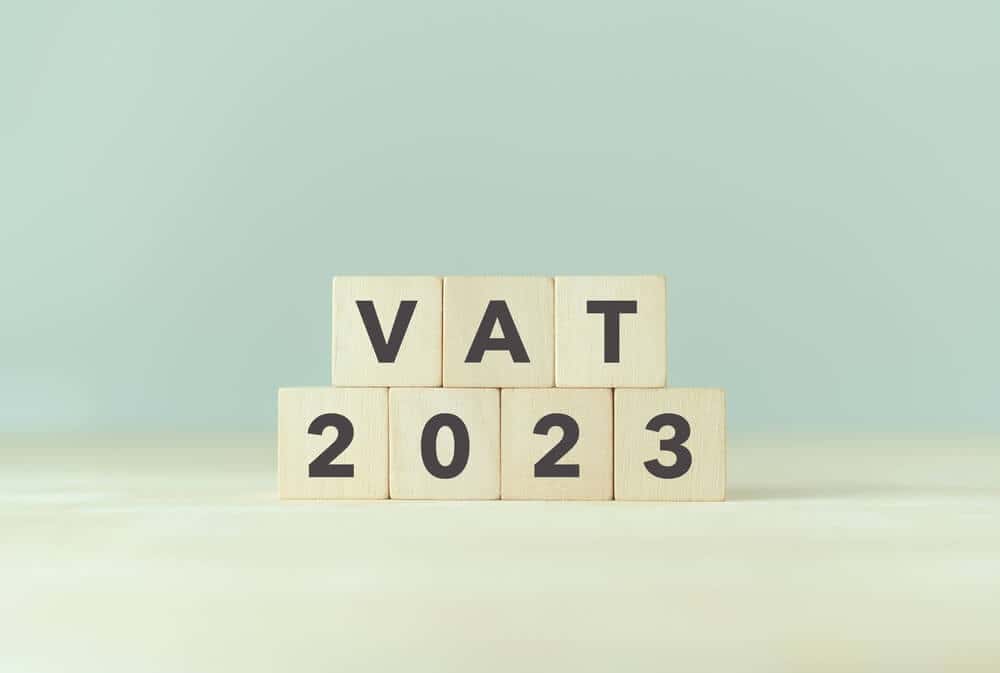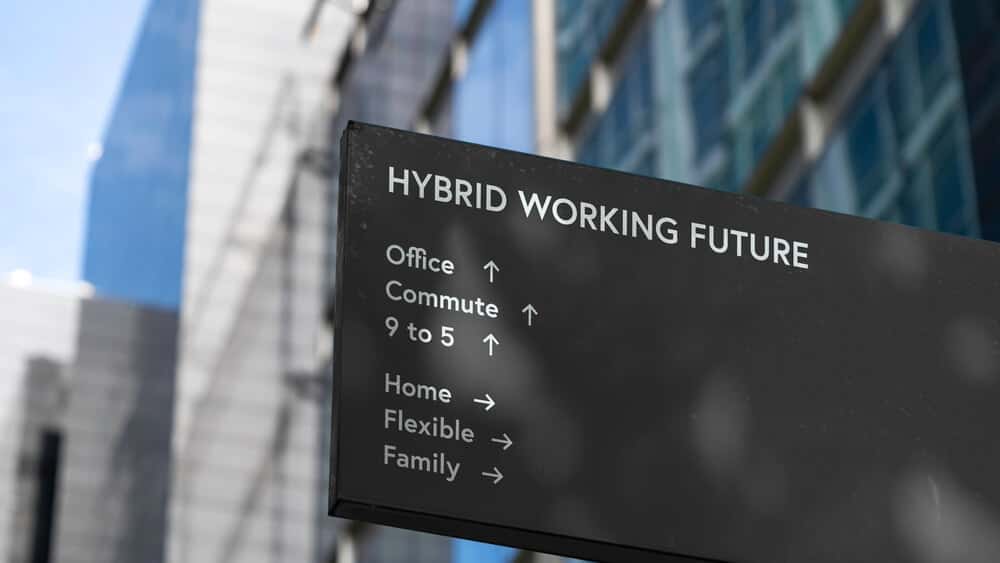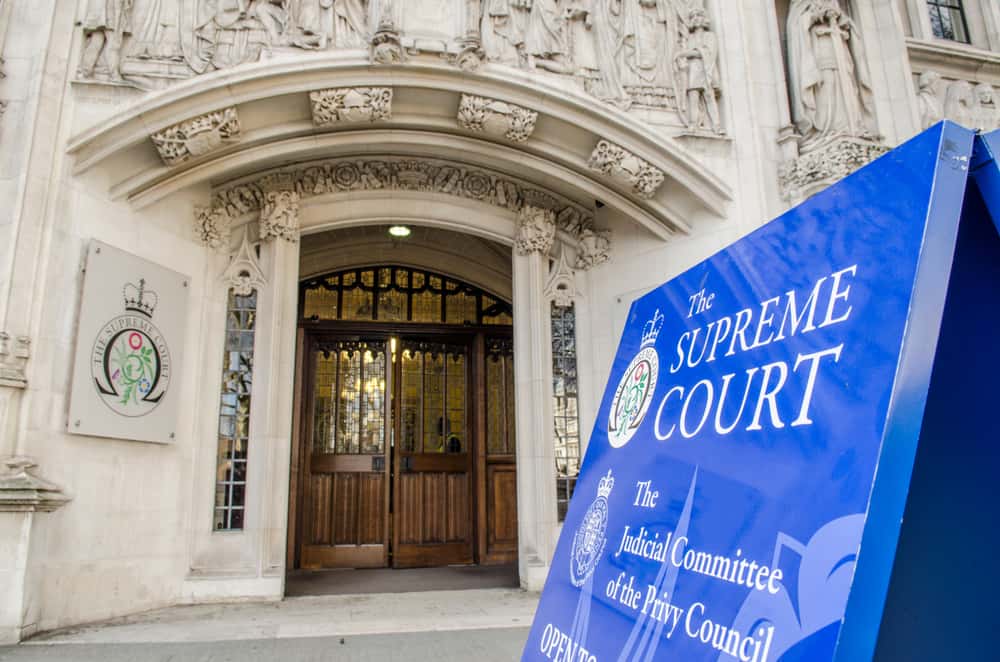Rayner Essex welcomes you to the Summer edition of the Tax Round, where we bring you the latest tax news, insights and updates, that we hope you’ll find interesting. We have also included our team story feature, catching up with Marina Trinchese, as well as some important key diary dates to be aware of.
In this Summer edition:
Our tax articles include the following:
- Companies House gets major new powers
- Crypto loss?
- Short-term property let: does HMRC need to know?
- Plastic Packaging Tax update
- Employers’ PAYE: apply online for time to pay
- VAT: the option to tax explained
- Hybrid and flexible: live issues for employers
- Director duties in landmark law case
Take a look at our Feature – Our team story with Marina Trinchese, Private Client Director of Tax at Rayner Essex to find out more about working in tax and whether a career in tax would be for you.
Should you require any further guidance on any of the topics covered in this newsletter, or for any other questions relating to tax and accounting matters, do get in touch with Mark Moore or Marina Trinchese who will be happy to assist you. Happy reading and here’s wishing you a great summer ahead!
Companies House gets major new powers

The Economic Crime and Corporate Transparency Bill, currently going through parliament, impacts company directors, secretaries, and people with significant control.
The move gives Companies House greater powers to check information on the companies register, and enhanced ability to work with law enforcement and other bodies tackling fraud. It’s described as the ‘biggest upgrade’ at Companies House in 170 years, but the new legislation doesn’t just apply to UK companies. Other legal entities, such as limited partnerships – including Scottish limited partnerships, and limited liability partnerships, are also within scope.
Of particular importance are rules requiring new and existing directors to verify their identity. People with significant control and anyone else filing with the Registrar will also need to verify. Restrictions are imposed on the use of corporate directors.
New accounts-related requirements come in, too. The option to file abridged accounts will be removed, so that all small companies will have to file a profit and loss account and directors’ report. Micro-entities will also be required to file a profit and loss account. Companies, including dormant companies, relying on audit exemptions will need to make an eligibility statement, and in due course, digital filing and full tagging of financial information in iXBRL format will be mandated.
The Bill sets out to modernise the law governing limited partnerships, including Scottish limited partnerships. This will bring stricter registration requirements; the need for limited partnerships to maintain a connection to the UK; and increased transparency. The Registrar will be able to deregister limited partnerships in certain circumstances, for example where they are no longer carrying on a business.
It’s all part of a much bigger picture: the ongoing drive against criminal abuse of corporate structures for fraud, terrorism and money laundering purposes. It’s also part of the government’s bid to stop the use of the UK as a safe haven for ‘dirty money’ following the invasion of Ukraine. The logic is that more enforcement powers, more compliance checks, more requirements to make financial information available to the public, make a more transparent business environment. And a more transparent business environment makes it harder for criminals to hide.
As yet, there is no start date for these provisions. They are likely to be introduced in stages, but it would make sense to consider now how to deal with the changes coming. We should be happy to discuss this with you further.
Crypto loss?

Cryptoassets are a hot topic, but amid the plunging prices of a crypto winter, what’s the position if you make a loss?
HMRC usually treats holding cryptoassets as a personal investment, rather than a financial trade. This brings activity within the capital gains tax regime. If you make a loss on your transactions, it will fall to be treated under the usual capital gains tax loss rules. It would be possible to offset the loss against other gains in the same or a future tax year, though not to carry it back against previous years.
Losses are claimed on the tax return, but note, in passing, that the loss crystallises only on disposal. In HMRC’s words, ‘“disposal” is a broad concept’. It includes sale of cryptoassets; using them in payment for goods and services; exchanging them for a different type of cryptoasset; and gifting cryptoassets to someone other than a spouse or civil partner. In certain circumstances, it may be possible to crystallise losses for tokens that are still owned, if they become worthless during your ownership. This involves what is called a capital gains tax negligible value claim. Having appropriate records is the key to dealing with HMRC in any of these areas. You need to be able to show an audit trail from acquisition to disposal, and we should be pleased to explain exactly what that means in practice.
Capital gains tax planning is always complex. When superimposed on the new and evolving field of cryptoassets, it can seem even more so. The importance of having the right information, tailored to your circumstances, cannot be overstated – so do please talk to us for more advice.
Short-term property let: does HMRC need to know?

Many websites urge property owners to start earning from their home or spare room – but what they don’t always mention is that HMRC may want a piece of the action.
Very few sources of income are exempt from tax. Income from short-term property letting is likely to need to be included in the calculation of your taxable income, although there are some occasions where property-specific tax reliefs may apply.
Property tax reliefs
At the commercial end of the spectrum, bespoke tax rules exist for furnished holiday lettings, which serve to treat letting income as trading income. This can bring a number of tax advantages: loan interest to buy or improve the property, for example, is eligible for tax relief, and the income can be treated as relevant earnings for the purposes of personal pension payments. But to access this regime, strict qualifying criteria apply. These include a minimum period of availability to the public each year and a minimum period of actual letting.
At the opposite end of the range, comes the property allowance. This is aimed to minimise the compliance burden for low levels of letting income – for example where a room, or perhaps parking space on the family driveway, is let out very occasionally. The allowance is £1,000 each year, and usually, where gross property income is £1,000 or less, it is not necessary to report such income to HMRC. The property allowance is not available where properties are held through a partnership or in a company. Note, that if a property is held jointly (but not through a partnership) then each taxpayer has their own property allowance. Where property income is more than £1,000, HMRC requires notification. Practically speaking, many taxpayers are, in any case, likely to need to complete a tax return to account for other income. It is also necessary to keep records of the property income against which the property allowance is set.
The Rent a Room Scheme is another scheme designed to ease the admin burden for lower levels of income. It exempts the first £7,500 of rent each year from a lodger in your only or family home – or £3,750 where rent is shared jointly. Note that this is different from the property allowance. It can also be used for trading income from guest houses or bed and breakfast establishments. Where income is less than £7,500, there is no need to complete a tax return.
HMRC compliance
HMRC is currently writing to some taxpayers where it has reason to believe that they may have earned income from short-term property letting, not disclosed it to HMRC – and may need to pay tax. This includes earnings from using property sites like Airbnb, Booking.com, VRBO and Holiday Lettings.
The letters are meant to nudge taxpayers to review their tax position, and put right any mistakes which might have been made. If you get one, it will ask you to complete a Certificate of Tax Position within 30 days, and tick a box to say either that there is no income to disclose, or that there is. If there is, HMRC asks recipients to use its online Digital Disclosure Service. It stresses that failure to respond to the letter may trigger an enquiry into someone’s tax affairs.
Should you receive such a letter, please do discuss the position with us before any action is taken – and with an eye to the deadline specified. Serious consequences can attach should HMRC determine that a false declaration has been made on a Certificate of Tax Position, and there may be a more appropriate means to make any disclosure necessary. We can help you take stock and discuss the best route to take in these circumstances.
Plastic Packaging Tax update

The Spring Budget 2023 confirmed an increase to the rate of Plastic Packaging Tax (PPT) from 1 April 2023. Where packaging falls within scope of the tax, the rate increases in line with the Consumer Price Index, becoming £210.82 per tonne, rather than £200 per tonne. The new rate applies to packaging manufactured in or imported into the UK after this date.
HMRC had previously announced an about-turn on rules for invoices where businesses are liable to the tax. The original intention was a mandatory requirement for businesses liable to the PPT to state on their invoices that PPT had been paid. Initially deferred, it has since been confirmed that it will not now take effect. Whilst businesses are encouraged to give visibility to the PPT, invoice wording will not be a legal requirement. HMRC suggests other ways in which the PPT can be highlighted. These include giving information about the PPT on price lists, and sharing with customers how much PPT has been charged.
Employers’ PAYE: apply online for time to pay

HMRC’s time to pay facility offers a structured monthly repayment arrangement to taxpayers struggling to settle an outstanding tax liability in full, on time. Where criteria are met, this can now be arranged online for an employer’s PAYE liability, removing the need to phone HMRC. This can already be done for income tax self assessment.
HMRC’s approach
HMRC always tailors time to pay arrangements to the circumstances of the individual taxpayer. This means monthly repayments are worked out with reference to your income and expenditure, and HMRC is open to renegotiating repayments if circumstances change.
Whilst HMRC is committed to trying to help taxpayers pay their outstanding liabilities, it also has to be convinced that there is a realistic chance of repayment. If it thinks that someone is unlikely to be able to keep up repayments, it will probably refuse time to pay.
Who can use the online service?
The online option can be used if:
It’s important to note that there is still interest to pay on outstanding tax, even where a time to pay arrangement is in place.
How to do it
To start the procedure off, follow the links from the ‘If you cannot pay your tax bill on time’ page on gov.uk. You need your employer PAYE reference number to hand, plus your bank account details and details of any payments missed already.
If online isn’t an option
If you can’t tick all the boxes for the online criteria, time to pay is still an option. It’s simply that there is a different route to apply. Here you should use either HMRC webchat, signed on the ‘Payment problems’ page; or the Payment Support Service phone line. This is available on 0300 200 3835 between 8am and 6pm, Monday to Friday.
VAT: the option to tax explained

The VAT treatment of property can be challenging. Normally, supplies of land and buildings are exempt from VAT. There are some exceptions to this, the prime examples being the sale of new residential property, (zero-rated) and the freehold sale of new commercial property, less than three years old (standard-rated). But in most other cases, when property is sold or rented, no VAT changes hands and the person making the supply is debarred from recovery of VAT on associated expenditure. Where this poses a significant business issue, the option to tax is sometimes useful.
Overview
The option to tax is just that – a choice. It’s effectively about turning an exempt supply of property into a taxable supply. It applies to the sale or rent of commercial property, not to residential property. Opting to tax means you then charge VAT at standard rate on any supplies you make of the opted property and can recover input tax incurred in making the supply. Where supplies are both taxable and exempt, say where a building is used for both commercial and residential purposes, recovery should be restricted to input tax relating to the taxable supply only. If you rent out a flat over a shop, for example, the rents you receive for the flat will still be exempt from VAT, even if you have an option to tax covering the building as a whole. This may affect the amount of input tax that can be reclaimed.
It’s a decision with long term implications. Though an option can be revoked, this can usually only be done after 20 years. There are commercial implications, too: opting to tax adds to the cost of your supply, possibly deterring clients unable to recover input tax. Further along the line, you may need to factor in any interaction with the VAT Capital Goods Scheme; the impact on disposals which are treated as the transfer of a going concern; and the interaction with Stamp Duty Land Tax on sale. Bespoke advice is therefore recommended before any decision is made.
In the news
HMRC has recently changed its administrative and confirmatory procedures where someone notifies it of the option to tax. From 1 February 2023, the only acknowledgement it will provide is an automated email response. This means that HMRC’s automated email response becomes part of your VAT records, and should be kept appropriately. Additionally, it is no longer responding to requests to confirm the existence of an option to tax except where the effective opted date is likely to be more than six years ago, or in circumstances such as insolvency. To find out more about the option to tax, and HMRC’s changes, take a look at our recent Option to tax article.
Hybrid and flexible: live issues for employers

Non-standard work arrangements are now the not-so-new normal, and come with their own compliance risks. What are the areas to be aware of?
They’re different
Hybrid working is a type of flexible working, where an employee divides time between the workplace and a ‘remote’ location – most usually, their home. Depending on arrangements with the employer, they might work two days a week in the office, and three at home, for example. Since the pandemic, hybrid working has been more employer-led than flexible working, but employees can make an informal request for hybrid or home working, as well.
Flexible working, on the other hand, is always initiated by employee request, and can be about more than just location. It includes arrangements like job-shares and flexitime, or working compressed, annualised and staggered hours. And it’s something businesses may have had to consider, even before the pandemic. The Employment Rights Act 1996 gives employees who have at least 26 weeks’ continuous service, the right to request a change to working hours, times or place of work, including working from home.
Employers are required to deal with requests in a ‘reasonable manner’, and in line with a statutory Code of Practice published by Acas, the Advisory, Conciliation and Arbitration Service. Whilst there is no automatic right of approval, requests can only be refused on certain specific grounds. These include the burden of additional costs or detrimental impact on performance.
Rules are changing
The government intends to legislate to make the right to request flexible working a day one right – rather than one that starts after 26 weeks. In addition, the Employment Relations (Flexible Working) Bill going through Parliament means that:
The changes apply to England, Scotland and Wales (not Northern Ireland), and take effect from a date yet to be determined.
Review your discrimination risk
The changing environment brings new risks – particularly around discrimination claims and the equality agenda. Where a request is made for hybrid, home, or flexible working, check why: if made on the grounds of reasonable adjustment for disability, it means you need to comply with the Equality Act 2010. When responding to requests for alternative working arrangements, demonstrate – and document – the fact that staff are not disadvantaged because of protected characteristics. These include age, disability, sex, race, religion and belief. Make sure staff are treated equally, and remote workers are not disadvantaged where new working arrangements are in place. Your business will need to monitor areas like staff support, training, development and promotion regularly to give confidence that all staff are treated fairly and transparently.
Director duties in landmark law case

Are there circumstances in which directors must act in, or at least consider, the interests of the company’s creditors?
In a significant verdict for company directors, the Supreme Court has addressed this question for the first time. The case turned on a dividend payment made before the company involved went into insolvent administration. Some ten years before, in fact. More important than the detail of the case, however, is the take-away message for directors.
Directors normally have a fiduciary duty to act in good faith in the interests of the company, for the benefit of its members as a whole. But if a company is insolvent or nearing insolvency, this is modified. ‘As the financial position of the company deteriorates, the shareholders’ interests decrease in importance, and those of creditors increase.’ Once insolvency is inevitable, the interests of creditors become paramount.
This landmark case has a clear message. It warns that directors must ‘stay informed’. Noting that ‘progress towards insolvency may not be linear’, it suggests the need for:
The underscoring of director responsibilities is particularly important at a time of recession, when many companies are feeling financial strain. We are always on hand to help with advice during challenging trading conditions.
Feature: Our team story with Marina Trinchese

We recently caught up with Marina Trinchese, Private Client Director of Tax to find out why she left the Big4 to seek a career at Rayner Essex, and learn more about what drives her to reach new heights in the world of Tax.
Learn more about Marina, and whether a career in the Tax could be for you.
Key dates to be aware of:

05 July 2023
Last day for agreeing the operation of a
PAYE Settlement Agreement (PSA) for the
previous tax year with HMRC.
6 July 2023
The Deadline for submitting Employment
Related Securities (ERS) forms, Forms EMI40
and other relevant forms to HMRC to report
share-related benefits provided to employees in the previous tax year.
Returns must be made online via HMRC’s ERS system.
Deadline for filing forms P11D and P11D(b) for the previous tax year with HMRC.
Last day for giving any relevant employees their copy of form P11D for the previous tax year.
19 July 2023
Deadline for postal payments of Class 1A NICs for the previous tax year to reach HMRC.
22 July 2023
Deadline for electronic payments of Class 1A NICs for the previous tax year to reach HMRC.
31 July 2023
Deadline for second Self Assessment payment on account due for the previous tax year to reach HMRC.
Guest Authors for our Tax Round
If you’re interested in writing content for our upcoming Winter edition of the Tax Round, get in touch with Jenny Tryfonos and we will be happy to discuss your contribution as a guest author.



Sign up to our newsletter
Join our mailing list to receive regular updates on
the news and events you need to know about.

